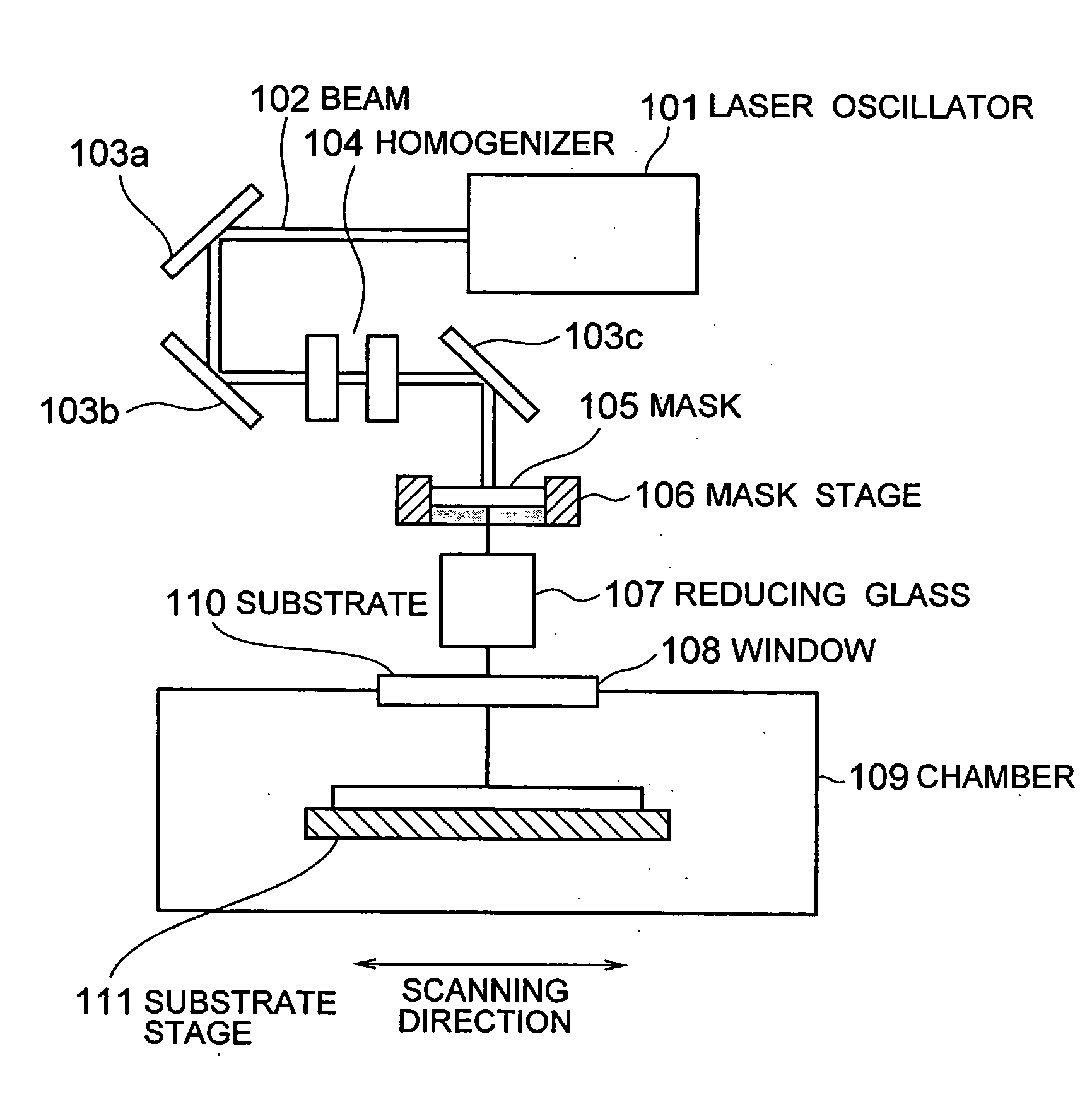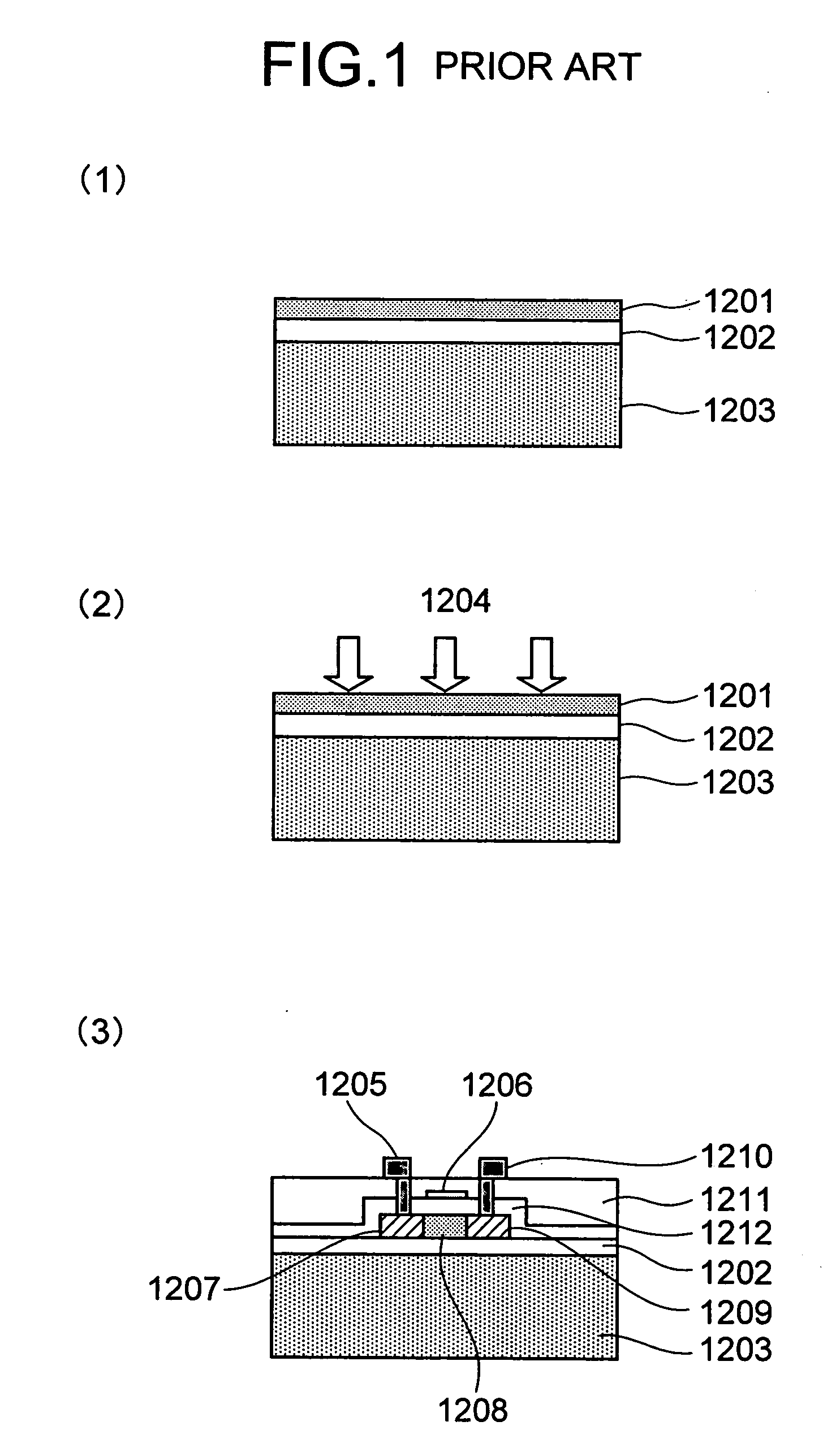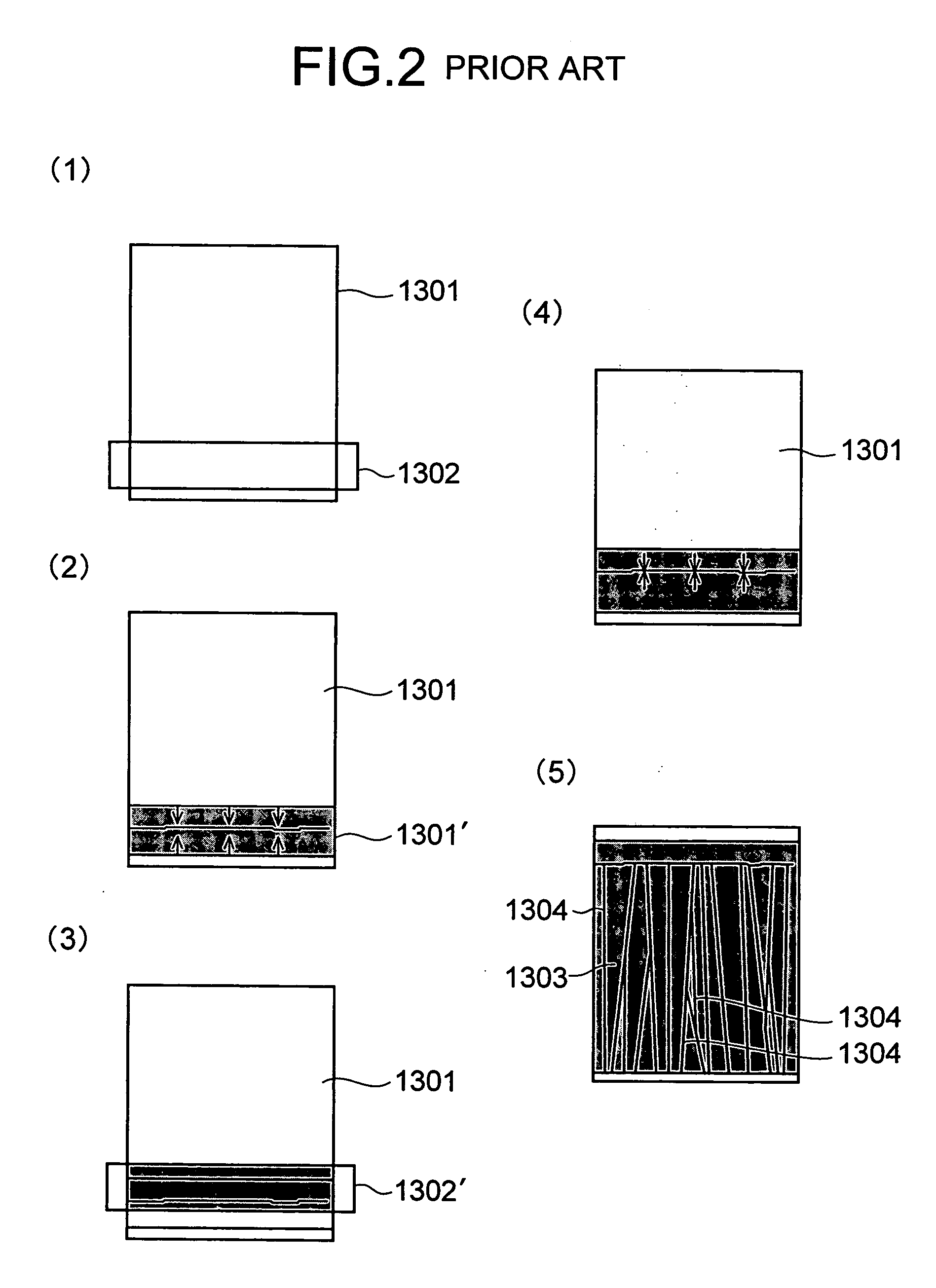Semiconductor thin film manufacturing method and device, beam-shaping mask, and thin film transistor
a technology of semiconductors and thin films, applied in the direction of polycrystalline material growth, crystal growth process, instruments, etc., can solve the problems of reduced mobility of carriers, grain boundaries, deterioration of carrier mobility, etc., and achieves high ion current, large transmittivity of laser light, and high mobility of carriers.
- Summary
- Abstract
- Description
- Claims
- Application Information
AI Technical Summary
Benefits of technology
Problems solved by technology
Method used
Image
Examples
example 1
[0073] Laser annealing was performed using the laser annealing device shown in FIG. 4. The method, the mask, and the laser used therefore were the ones described in the embodiment. As for the openings and the transmission section formed in the mask, a large number of slots in an extremely narrow width may be formed in line to be the openings and the like, or a large number of pores may be collectively formed to be the openings and the like. In this case, by changing the number of the slits or the density of the pores, the energy of the laser light can be altered. The substrate will be described. A no alkali glass was used for the glass substrate. On the glass substrate, an insulating film for preventing diffusion of impurities from the glass was formed. On the insulating film, an amorphous silicon film of 60 nm as the precursor film was formed by low pressure chemical vapor deposition (LP-CVD).
[0074] In this EXAMPLE, scanning irradiation was performed by using the mask in a shape s...
example 2
[0076] By using the same laser annealing device as that of EXAMPLE 1 and the mask in the shape shown in FIG. 7(1), scanning irradiation was performed by changing the beam concave length from 1.5 μm, 3 μm, 6 μm and to 12 μm. The irradiation condition is shown in TABLE 2. The irradiation intensity is the value on the substrate. The step width is the distance on the substrate scanned between each irradiation. The opening width 402, the concave length 404, and the concave width 403 in the TABLE are the values on the mask. The beam passed through the mask becomes in the shape shown in FIG. 7(2) on the substrate. The beam size on the substrate becomes the ⅓ of the beam size on the mask. That is, the beam width 502 is 10 μm, the beam concave length 504 is 0.5 μm, 1 μm, 2 μm, or 4 μm, and the beam concave width 503 is 5 μm.
TABLE 2EXAMPLE2-12-22-32-4Irradiation intensity (mJ / cm2)600600600600Step width (μm)0.50.50.50.5Opening width (μm)30303030Concave length (μm)1.53612Concave width (μm)151...
example 3
[0083] Scanning irradiation was performed by using the same laser annealing device as that of EXAMPLE 1 and the mask in the shape as shown in FIG. 5(1) in which the concave patterns 306c were periodically formed. The irradiation condition is shown in TABLE 3. The irradiation intensity is the value on the substrate. The step width is the distance on the substrate scanned between each irradiation. The opening width 203, the concave length 202, the concave width 204, and the convex length 205 in the TABLE are the values on the mask. The beam passed through the mask becomes in the shape shown in FIG. 5(2) on the substrate. The beam size on the substrate becomes the ⅓ of the beam size on the mask. That is, the beam width 303 is 6 μm, the beam concave length 302 is 1 μm, the beam concave width 304 is 3 μm, and the beam convex length 305 is 1 μm.
TABLE 3EXAMPLE 3Irradiation intensity (mJ / cm2)600Step width (μm)0.2Opening width (μm)18Concave length (μm)3Concave width (μm)9Convex length (μm)...
PUM
| Property | Measurement | Unit |
|---|---|---|
| wavelength | aaaaa | aaaaa |
| crystal growth width | aaaaa | aaaaa |
| length | aaaaa | aaaaa |
Abstract
Description
Claims
Application Information
 Login to View More
Login to View More - R&D
- Intellectual Property
- Life Sciences
- Materials
- Tech Scout
- Unparalleled Data Quality
- Higher Quality Content
- 60% Fewer Hallucinations
Browse by: Latest US Patents, China's latest patents, Technical Efficacy Thesaurus, Application Domain, Technology Topic, Popular Technical Reports.
© 2025 PatSnap. All rights reserved.Legal|Privacy policy|Modern Slavery Act Transparency Statement|Sitemap|About US| Contact US: help@patsnap.com



